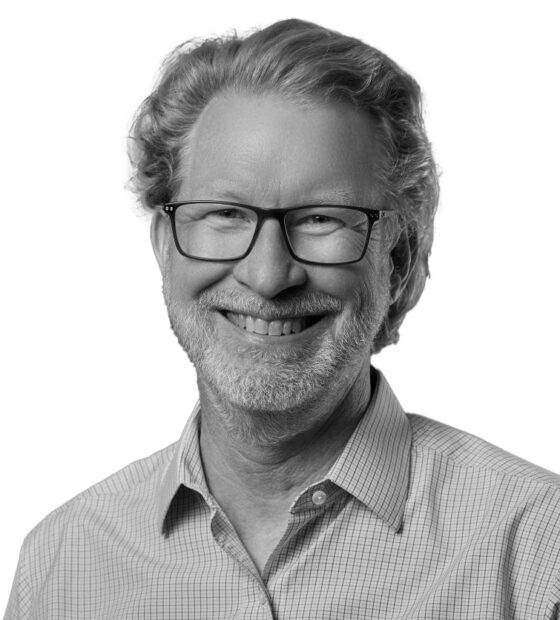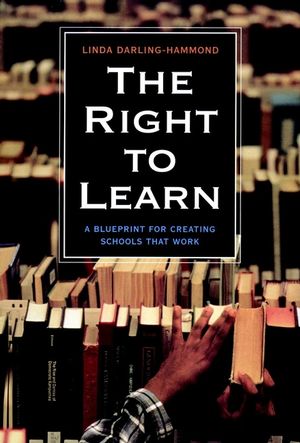Dr. Peter Ross is the managing director of the Youth Thriving Through Learning Fund, a collaborative initiative designed to build on unprecedented state investments in public education and related systems while reimagining the learning experience for California’s diverse majority of youth. In this interview with Roberta Furger, Senior Director, Narrative and Strategy, Peter shares about the initiative and why he’s excited to help catalyze a transformation of high schools in California.
Roberta: What attracted you to the role and the Youth Thriving Through Learning (YTL) Fund?

Peter: I’m excited about the opportunity to support schools to become places where students learn deeply. Too few students have access to that kind of learning right now. I’m also excited to be part of a new way of doing philanthropy. Instead of just one foundation’s effort, we are bringing together what I like to think of as a patchwork of foundations whose work and impact will be more vibrant — or in this case, more impactful — because of the collaboration.
Roberta: How did your prior experience prepare you and lead you to this role?
Peter: I taught in a public school in New York City that was part of a larger network of elementary and high schools that were taking a student-centered and deeper learning approach (although it wasn’t called that at the time). I saw what a profound difference it had for students and their families and how young people were able to engage enthusiastically in their learning and demonstrate what they learned in dynamic ways through presentations, projects, and exhibitions. Those schools also had a vibrant educator culture, where teachers were excited and engaged to collaborate with one another to create these types of learning experiences for their students and families. These same conditions exist in high schools in California, but only in pockets. I’m excited to lead an effort where the goal is to make those kinds of experiences the norm for every student, every family, and every educator in California.
We want high schools to look and feel more like elementary schools. That means deep personalization and active, engaged learning that’s made public to other students, to other educators, and to families.
Roberta: What will the Fund focus on?
Peter: There is a healthy body of research on what adolescents need to thrive. And there’s a complementary body of research on what that means in terms of how their schools should be organized and designed. This fund seeks to shed light on that research, to highlight the bright spots that already exist, and then to work with system leaders and policy makers so that these types of schools can exist throughout California.
Roberta: Can you say more about the type of schools you’re talking about? What do they look like?
Peter: In many ways, we want high schools to look and feel more like elementary schools. That means deep personalization and active, engaged learning that’s made public to other students, to other educators, and to families. We want more places where students, families, and educators are seeing work publicly displayed in dynamic ways that are consistent with the research on adolescent thriving and consistent on designing schools for powerful teaching and learning.
Roberta: The YTL Fund is also concerned about the life of adolescents beyond high school. Can you share a bit about the opportunities and experiences you are hoping to foster/encourage through the fund?
Peter: This work will have three components. First, many of California’s high school strategies, including the Golden State Pathways and dual enrollment initiatives, are intentionally designed to connect secondary to post-secondary and beyond. Second, we’ll be exploring how to create more equitable access to higher education, including efforts to integrate evidence of deeper learning (such as portfolios, for example) into the college admissions process. And finally, we’ll be supporting what are known as “earn and learn” efforts that recognize meaningful work experiences and support young people whose life circumstances require them to navigate work and formal education to support themselves and sometimes their families. This can include youth in foster care or who are unhoused, as well as newcomer students.
Roberta: Grantmaking will be a component of your work. What other types of strategies will you employ to advance the Fund’s goals?
Peter: In addition to grantmaking, we’ll also be playing a connector role, bringing people and organizations together to explore and learn deeply with one another about what’s working, what isn’t working, to highlight bright spots, and to think together about where the gaps in our practice exist. We’ll also be investing heavily in narrative, making sure that we tell the stories of the good work that’s happening and then share those stories with policy makers, system leaders, as well as with students and their families, and the educators that work with them on a daily basis. We’d love to get to a place where everyone in California over time has a clear vision of what education can look like for adolescents.
Roberta: It can be hard to imagine a new way of doing school if you’ve never experienced it. How did you first encounter the vibrant, student-centered schools that are the focus of the Youth Thriving Through Learning Fund?

Peter: Initially, I experienced it as a teacher and later it was wonderfully codified through a book called Right to Learn, A Blueprint for Creating Schools that Work by Dr. Linda Darling-Hammond. The book laid out a portrait of what was possible with schooling by documenting what already existed. Dr. Darling-Hammond wrote about how engaged students, families, and educators were in these schools. It was so inspiring that the book and the schools it featured have been a touchstone for everything I’ve done in the subsequent 25 years.
Roberta: If we were to fast-forward five years from now, what do you hope will be different because of the Youth Thriving Through Learning Fund?
Peter: I am hoping this Fund will show students and families and everyone working in education what is possible. And, because these schools already exist, they will understand that it can exist in their school, too. I believe that if school communities understand what’s possible, they will do whatever it takes to make that the reality for students, families, and educators in their district.
